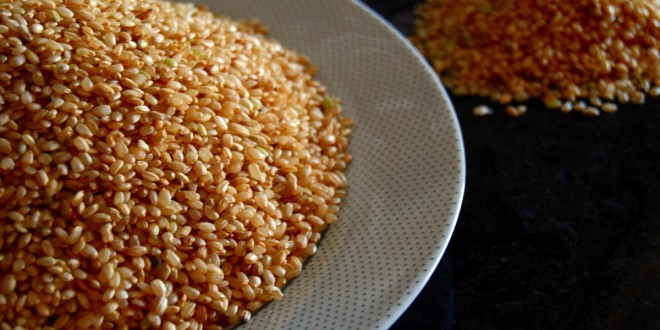At present, when people think about rice, it is not often in its whole-grain form. However, since the beginnings of agriculture it was whole-grain cereals that traditionally formed the basis of human nutrition.
It was only when the rate and patterns of consumption changed that the factor of convenience forced a change in eating habits, with refined foodstuffs regularly being used. Whole-grain rice is one of the most complete and balanced foodstuffs, promoting the stability of insulin and glucose levels in the blood. The fibre it contains can also contribute to the lowering of cholesterol (1) and the risk of some types of cancer (2).
For its part, refined rice is directly related to type 2 diabetes (3) owing to the speed at which glucose is released into the blood, and to obesity (4); because it is not satiating, it leads people to eat more food. Also stemming from the loss of certain nutrients during the refining process, the prolonged consumption of white rice can cause a lack of vitamin B complex.
Apart from important minerals such as calcium, magnesium, copper, iron and zinc, whole-grain rice contains phytic acid (phytate) in its bran. This acid impedes the absorption of minerals present in the rice by the intestine, and it is for this reason that it must first be soaked for at least eight hours before being cooked. Whole-grain rice is not only a foodstuff that appears in traditional diets, it is also an economical, healthy, natural and tasty solution.
“Whole-grain rice is one of the most complete and balanced foodstuffs, promoting the stability of insulin, satiation and the lowering of cholesterol and the risk of cancer.”
(1) Anderson JW, Hanna TJ, Peng X, Kryscio RJ. Whole grain foods and heart disease risk. J Am Coll Nutr 2000 Jun;19(3 Suppl):291S-9S. PMID:17670.
(2) Cade JE, Burley VJ, Greenwood DC. Dietary fibre and risk of breast cancer in the UK Women’s Cohort Study. Int J Epidemiol. 2007 Jan 24; [Epub ahead of print] . 2007. PMID:17251246.
(3) Emily A Hu, An Pan, Vasanti Malik, Qi Sun. White rice consumption and risk of type 2 diabetes: meta-analysis and systematic review. BMJ 2012; 344 doi
(4) Lutsey PL, Jacobs DR Jr, Kori S, Mayer-Davis E, Shea S, Steffen LM, Szklo M, Tracy R. Whole grain intake and its cross-sectional association with obesity, insulin resistance, inflammation, diabetes and subclinical CVD: The MESA Study. Br J Nutr. 2007 Aug;98(2):397-405. Epub 2007 Mar 29.
 Eco123 Revista da Economia e Ecologia
Eco123 Revista da Economia e Ecologia



